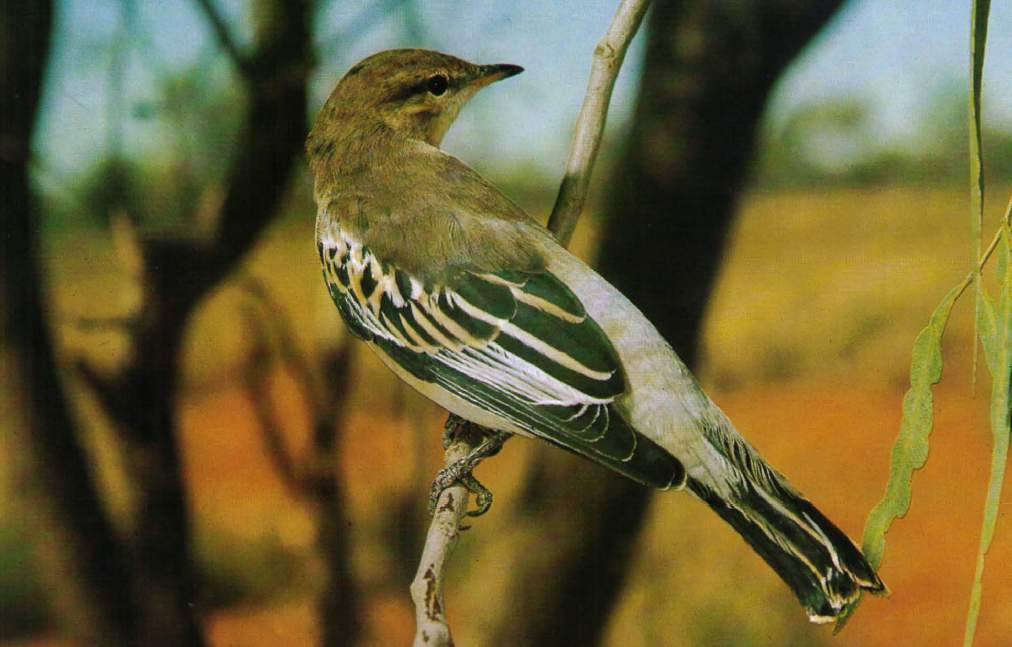In Australia, the White-winged Triller (Lalage tricolor) is one of the most conspicuously migratory songbirds. This species is also known as the White-shouldered Caterpillar Eater. A white-winged trill is a member of the Campephagidae cuckoo-shrike family.
Every spring, it settles across southern Australia to breed, varying from one area to another depending on seasonal conditions. The majority of nesting occurs south of the Tropic of Capricorn. Then, in March-April, they migrate to the tropical north without leaving the continent; some birds remain there year-round to breed in the Kimberleys and Arnhem Lands.

Their habitats are open woodlands and scrub-covered in eucalyptus and acacia. It is common for trillers to travel in flocks of two or three to 50 people during migration and during winter quarters. Foraging across the countryside, these groups eat beetles, grasshoppers, phasmids, larvae and spiders, fruits, and seeds. Often the birds hunt on the ground, hopping over tussocks, poking into fallen logs, and poking into rocks before flying off to catch their prey. Their prey may be picked off in flight, or gathered from branches or vegetation- particularly among flowering bushes.
With long loping undulations, the flight is swift and graceful. They are always visible because their males molt out of their pied nuptial plumage into a brown-and-grey feminine dress when not breeding, but retain black-and-white markings on their wings and tails. The older the bird, the more nuptial colors it retains. Among Australian songbirds, White-winged Trillers share the unique trait of molting into and out of breeding dress twice a year with Malurine Wrens. Their pointed wings and lack of a white brow have led to their separation from the closely related Lalage sueurii of Timor.
It is also common for breeding trillers to live in colonies. The pairs may nest within a few meters of each other in the same group of trees, but defend separate foraging territories up to a kilometer away; each pair may require up to 15 hectares of feeding grounds. The males advertise their territory by noisy chattering from high perches and in showy circling display flights, fluttering slowly or climbing high then gliding down with spread wings and tail; they even sing from the nest. During the nesting process (two to four days) and the building process (two to five days), both sexes participate. They also share incubation, during which one will feed the other and both will feed and brood the young, the female doing most of the work.
Read More – Varied Triller “Lalage leucomela”

It measures 160-180 mm in length. Male: In breeding plumage, the crown to the upper back is plain glossy black; the rump is pale grey. Black wings with white flashes from wing coverts to edges of secondaries. Outer feathers of the tail are white with a black tip. The eye is dark brown. The bill and feet are black. White edging to the wing coverts is buffier in non-breeding plumage; off-white eyebrows.
A female resembles a non-breeding male. The crown to the upper back are midbrown; the eyebrows are cream-buff; and the rump is grey-brown. The coverts and secondaries are pale buff, while the wings and tail are dusky brown. Over the breast, white underparts are washed with brown. Dark brown at the base, paler at the top. A dusky brown color on the feet. It matures as a female; its breasts are streaked.

The White-winged Triller call is a loud, incessant musical chatter by a male, often ending in a canary-like trill, given during display flight or from vantage perches. Silent otherwise.
Nesting and breeding take place primarily between September and March. Usually placed on a horizontal or sloping branch 1-12 meters above ground, nests are small, shallow saucers composed of rootlets and grass, small pieces of bark and lichen on the outside, and bound with spiderwebs to a thin fork.
This bird lays 2 or 3 eggs, which are blue or green-tinged, blotched, and streaked with red-brown; oblong-oval, about 21 x 15 mm. The incubation period for both sexes is about 14 days. Twelve to fourteen days after hatching, the young fledge.
White-winged Trill is found throughout mainland Australia in open forests, woodlands, and scrub; it is a vagrant in Tasmania. Nomadic migration, south in spring, north in autumn. The species is also found in southeastern New Guinea (isolate?). There are no races or one in New Guinea.
Read More – The Baya Weaver Bird (Ploceus philippinus)







